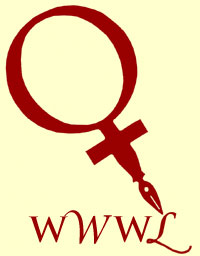Jill Norgren, They Made Good Trouble: U.S. Women Who Ran for Office 1853-1920
Jill Norgren delivered this short talk at the “Nevertheless, She Persisted: 30 Years of Women Writing Women’s Lives" Conference (Zoom), that celebrated the 30th Anniversary of the Women Writing Women’s Lives Seminar (New York City). She spoke on the “Nevertheless, Our Foremothers Persisted: Reflections on the 100th Anniversary of U.S. Women’s Suffrage” panel.
In 2008 I published the biography of Belva Lockwood, one of the first women lawyers in the United States and, in 1884, the first woman to run a full campaign for the U.S. presidency. Lockwood was ambitious and would have loved to win the office but, in fact, hers was a symbolic campaign meant to show that women were interested in politics. During the campaign she repeatedly said, “I cannot vote, but I can be voted for.”
The fact of Lockwood’s campaign prompted several of my colleagues to ask: Did other women seek elective office in the 19th and early 20th century in order to promote the discussion of women’s rights while not expecting to win? Or, equally radical, in these years did women in the United States campaign for elective office fully invested in the prospect of winning?
The answer to each question is a resounding YES! Between 1853 when Maine resident Olive Rose won a county political office and ratification of the 19th Amendment in 1920 at least 4000 women ran for political office in the United States, primarily at the town, county, or state level.
The existence of these 4000 women was uncovered through research conducted by members of the HerHatWasintheRing Project. Historian-biographers Wendy Chmielefski, Kristen Gwinn-Becker, and I founded the project and its website (see above) a decade ago. We guessed our sleuthing would bring to light 100 or 200 such women. Believe me when I say that we did not expect thousands.
So, briefly, who were these women, where did they live, and what offices did they run for? And how was it that they could run for office when many could not vote?
These female candidates were primarily Caucasian and Christian. We do not find Jewish women or women of color appearing as candidates until a few years before 1920. Some came from modest economic circumstances; others were solidly middle class. Women candidates ran for office in their 20s and as seniors, but most were middle aged. They campaigned in states and territories all over our country although very little in the South and Southwest.
Pages: 1 · 2
More Articles
- Decisions, Decisions: How National News Outlets Project And Call Presidential Winners
- Jill Norgren Writes: Did Women in the US Campaign for Elective Office Fully Invested in the Prospect of Winning? “I cannot vote, but I can be voted for”
- A Jo Freeman Review of Won Over: Reflections of a Federal Judge from Jim Crow Mississippi
- Because of Her Story: National Air and Space Museum Hosts “We Can Do It! Women in Aviation and Space"; Women Film Directors and “Empresses of China’s Forbidden City”
- Jo Freeman: With the 116th Congress the Party Gap has Become a Party Chasm
- FA LA LA LA Frantic: Scaling Back on Holiday Excesses
- Still Learning: Lessons from a Lifetime in the Classroom, Eyes on the Prize
- The Bored of Education







